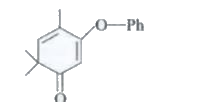Addition of water to alkenes in presence of conc. H2SO4 produces alcohol Which rule is followed in this reaction?
To determine the rule followed in the reaction of adding water to alkenes in the presence of concentrated sulfuric acid (H₂SO₄) to produce alcohol, we can follow these steps:
1. Identify the Reaction Type:
The reaction involves the addition of water (hydration) to an alkene. This is a common reaction where alkenes react with water to form alcohols.
2. Understand the Role of H₂SO₄:
Concentrated sulfuric acid acts as a catalyst in this reaction. It helps to protonate the alkene, making it more reactive.
3. Mechanism of the Reaction:
- The double bond (π bond) in the alkene breaks, allowing for the addition of new atoms.
- The sulfuric acid donates a proton (H⁺) to one of the carbon atoms in the double bond. This results in the formation of a carbocation (a positively charged carbon atom).
- Water (H₂O) then attacks the carbocation, resulting in the formation of an alcohol.
4. Markovnikov's Rule:
In this reaction, Markovnikov's rule is followed. This rule states that when HX (where X is a halogen or OH in this case) is added to an alkene, the hydrogen atom will attach to the carbon with the greater number of hydrogen atoms already attached, while the hydroxyl group (OH) will attach to the carbon with fewer hydrogen atoms.
5. Final Product:
The final product of this reaction is an alcohol, which is formed by the addition of the hydroxyl group (OH) to one carbon and a hydrogen atom (H) to the other carbon of the original alkene.
Conclusion:
The rule followed in the reaction of adding water to alkenes in the presence of concentrated sulfuric acid to produce alcohol is Markovnikov's rule.
---
The reaction involves the addition of water (hydration) to an alkene. This is a common reaction where alkenes react with water to form alcohols.
Concentrated sulfuric acid acts as a catalyst in this reaction. It helps to protonate the alkene, making it more reactive.
- The double bond (π bond) in the alkene breaks, allowing for the addition of new atoms.
- The sulfuric acid donates a proton (H⁺) to one of the carbon atoms in the double bond. This results in the formation of a carbocation (a positively charged carbon atom).
- Water (H₂O) then attacks the carbocation, resulting in the formation of an alcohol.
In this reaction, Markovnikov's rule is followed. This rule states that when HX (where X is a halogen or OH in this case) is added to an alkene, the hydrogen atom will attach to the carbon with the greater number of hydrogen atoms already attached, while the hydroxyl group (OH) will attach to the carbon with fewer hydrogen atoms.
The final product of this reaction is an alcohol, which is formed by the addition of the hydroxyl group (OH) to one carbon and a hydrogen atom (H) to the other carbon of the original alkene.
The rule followed in the reaction of adding water to alkenes in the presence of concentrated sulfuric acid to produce alcohol is Markovnikov's rule.
Similar Questions
Knowledge Check
- Question 1 - Select One
Phenol reacts with conc. HNO3 in the presence of conc. H2SO4 to give :
Ameta nitrophenolBortho nitrophenolCortho and para nitrophenolDpicric acid - Question 2 - Select One
Phenol reacts with acetone in the presence of conc. H2SO4 to from a C15H16O2 product. Which of the following compound is this product ?
A B
B C
C D
D
The heating of oxime of acetone in presence of conc. H2SO4 to form N - methyl ethanamide is called
View SolutionThe dehydration of alcohols in the presence of conc. H2SO4 at 170∘C involves one of the following :
View SolutionWhich of the following gas is not dried by conc. H2SO4 ?
View SolutionIn esterification reaction, the role of conc. H2SO4 is
View SolutionDecomposition of oxalic acid in the presence of conc H−2SO4 gives :
View SolutionA: Reaction of carboxylic acid with hydrazoic acid in the presence of conc. H2SO4 to form primary amine is called Schmidt reaction.
R: In this reaction isocyanate intermediate is formed.View Solution

